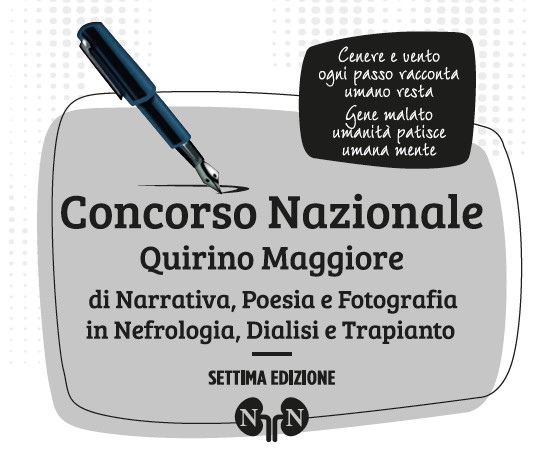Most read articles by the same author(s)
- Maurizio Gallieni, Marco Lombardi, Marcello Napoli, Towards the integrated model of vascular access management for hemodialysis , Giornale di Clinica Nefrologica e Dialisi: Vol. 24 No. 1 (2012): January-March 2012
- Luca Di Lullo, Fulvio Floccari, Vincenzo Barbera, Antonio Granata, Antonio De Pascalis, Rossella Faiola, Moreno Malaguti, Alberto Santoboni, Rodolfo Rivera, Claudio Ronco, Sepsis: An Example of Type 5 Cardiorenal Syndrome , Giornale di Clinica Nefrologica e Dialisi: Vol. 25 No. 3 (2013): July-September 2013
- Antonio Granata, Pasquale Fatuzzo, Nephrologist: act or perish , Giornale di Clinica Nefrologica e Dialisi: Vol. 29 No. 2 (2017): April-June 2017
- Giulio Distefano, Luca Zanoli, Luca Di Lullo, Antonio Basile, Antonio Granata, Disphosphonates and renal impairment , Giornale di Clinica Nefrologica e Dialisi: Vol. 30 No. 3-4 (2018): July-December 2018
- Luca Di Lullo, Claudio Ronco, Fulvio Floccari, Antonio De Pascalis, Rodolfo Rivera, Antonio Granata, Antonio Bellasi, Peritoneal ultrafiltration and cardiorenal syndrome: management of fluid congestion and role of sodium , Giornale di Clinica Nefrologica e Dialisi: Vol. 31 No. 2 (2019): April-June 2019
- Paolo Lentini, Massimo de Cal, Luca Zanoli, Antonio Granata, Roberto Dell’Aquila, Acute Kidney Injury: The Role of Biomarkers for Early Diagnosis , Giornale di Clinica Nefrologica e Dialisi: Vol. 28 No. 2 (2016): April-June 2016
- Sandra La Rosa, Salvatore Vittoria, Anna Clementi, Dario Galeano, Fulvio Fiorini, Antonio Granata, The Smart Drip-Feed: A Powerful Strategy to Prevent Contrast Induced Nephropathy , Giornale di Clinica Nefrologica e Dialisi: Vol. 28 No. 1 (2016): January-March 2016
- Oronzo Lazzari, Marcello Napoli, Marialuisa Le Fons, Vittorio Strazzeri, Sebastiano Cannata, Antonella Recchioni, Fabio Pennacchiotti, Arterovenous Fistula's Pseudoaneurysm Percutaneous Treatment: A Case Report , Giornale di Clinica Nefrologica e Dialisi: Vol. 29 No. 1 (2017): January-March 2017
- Marcello Napoli, The Buttonhole Technique: How to Convert a Fistula into a Catheter , Giornale di Clinica Nefrologica e Dialisi: Vol. 25 No. 4 (2013): October-December 2013
- Sandra La Rosa, Chiara Guglielmo, Alessandra Ocello, Concetto Sessa, Giuseppe Seminara, Antonio Granata, From reactive medicine to precision medicine , Giornale di Clinica Nefrologica e Dialisi: Vol. 33 No. 1 (2021): January-December 2021











